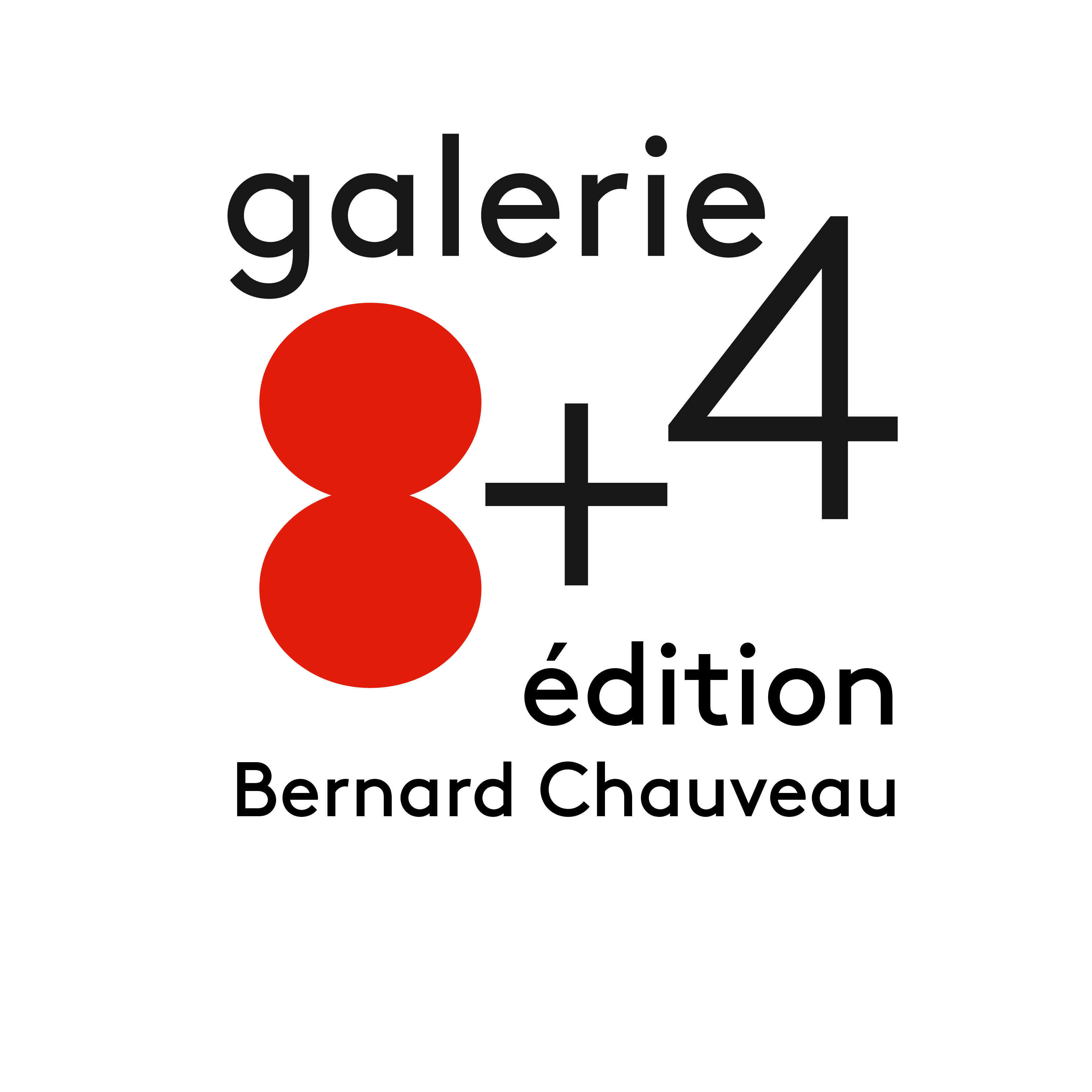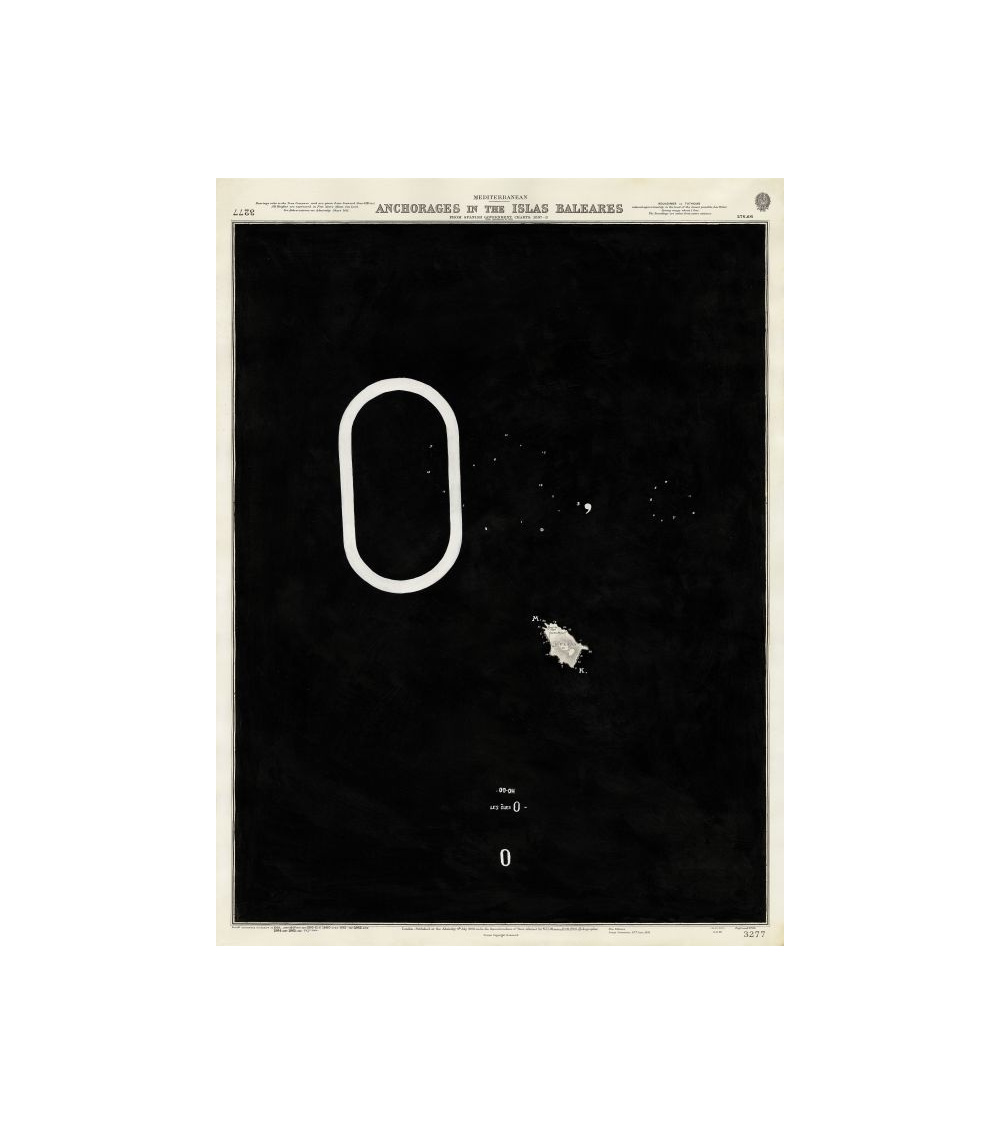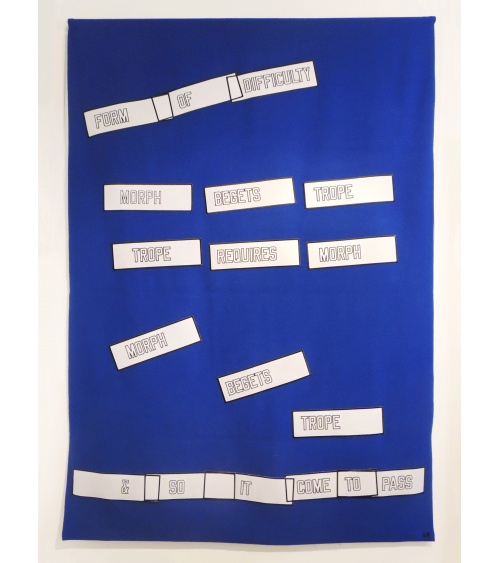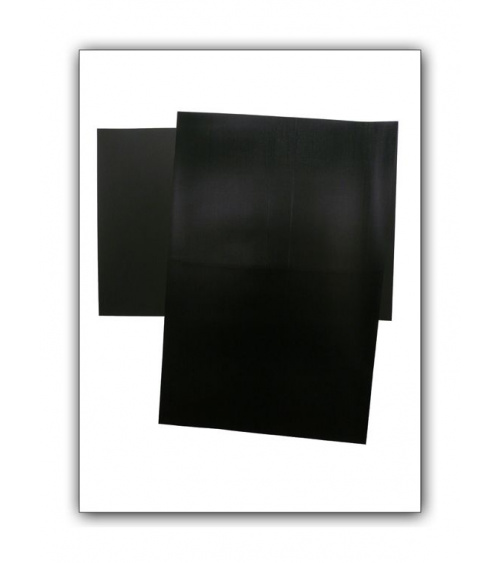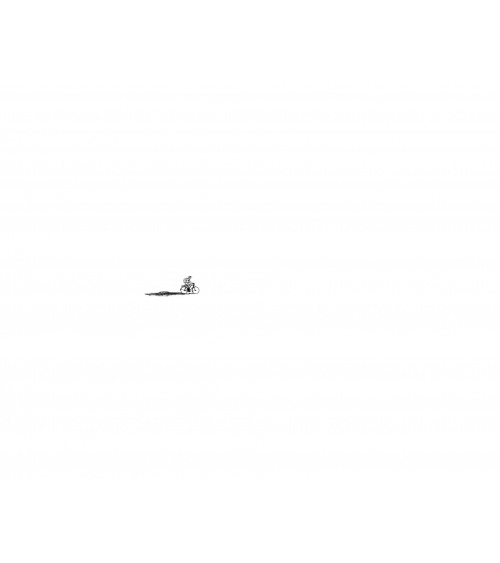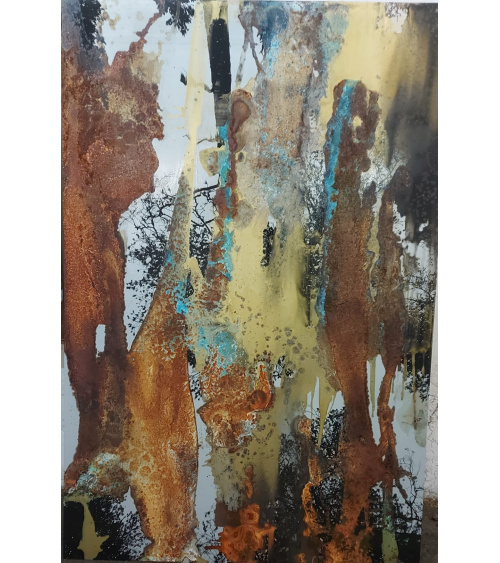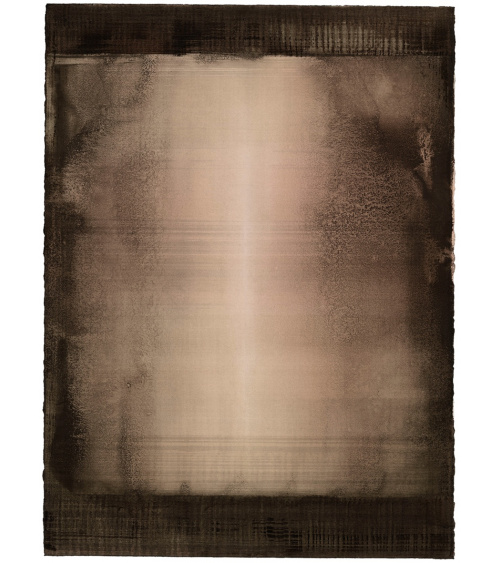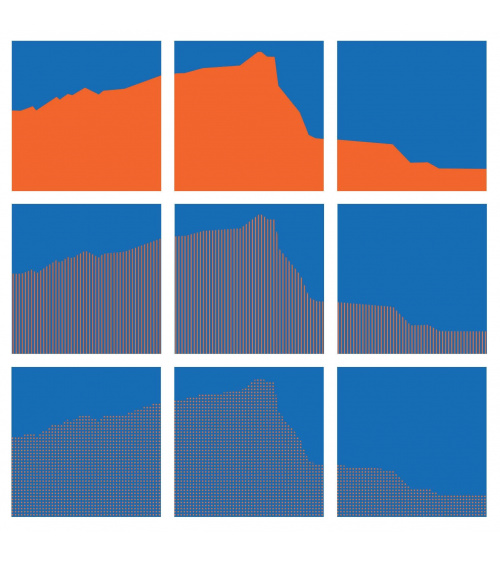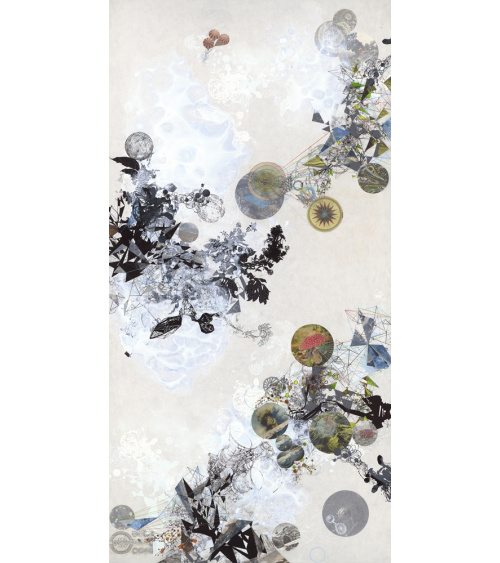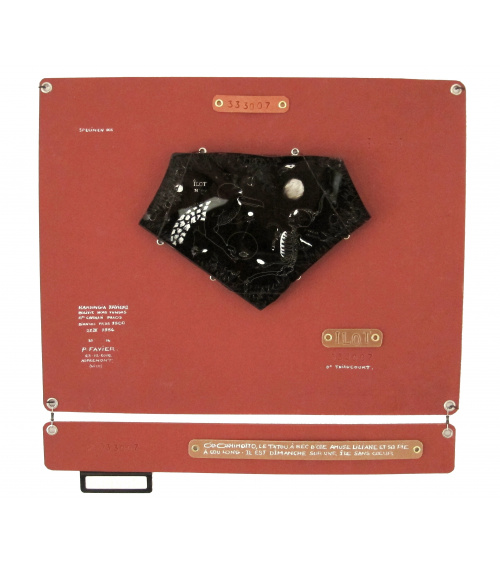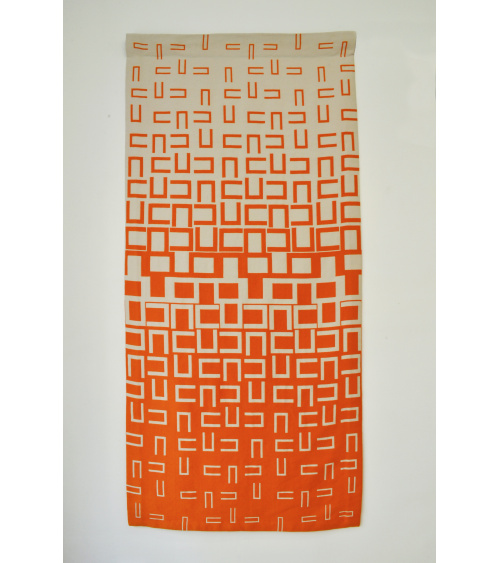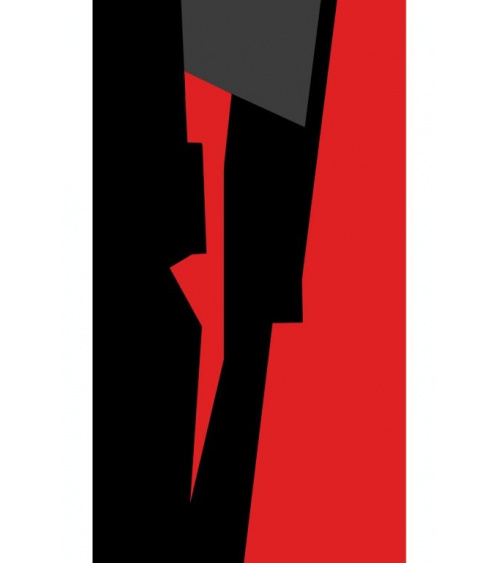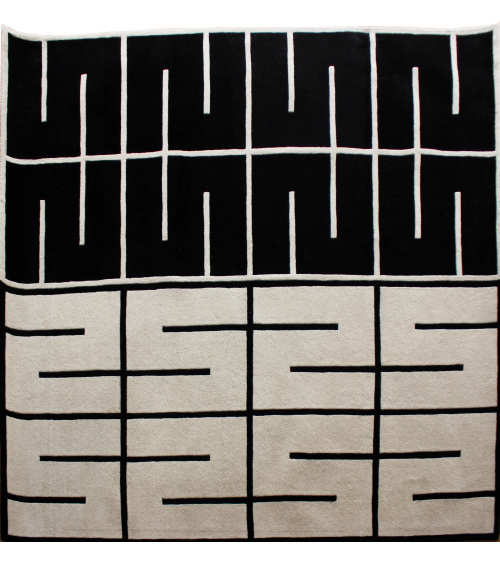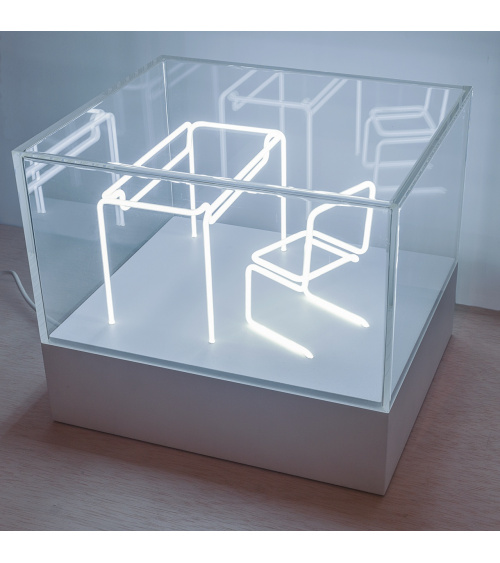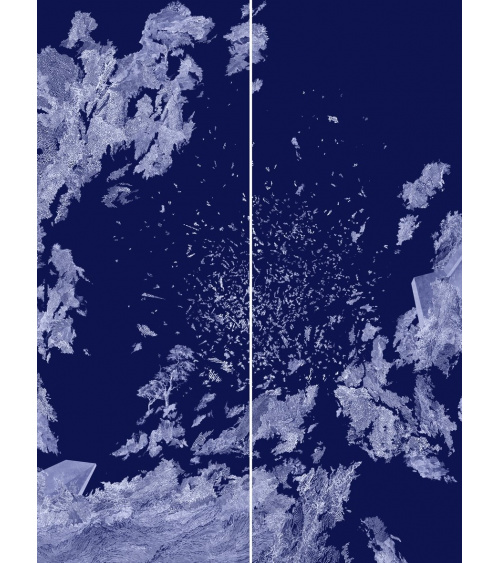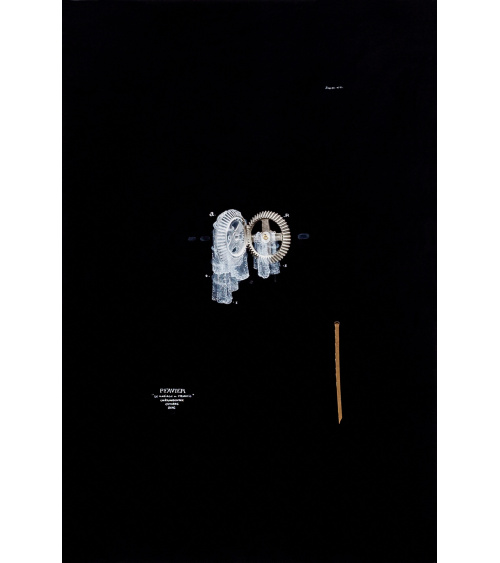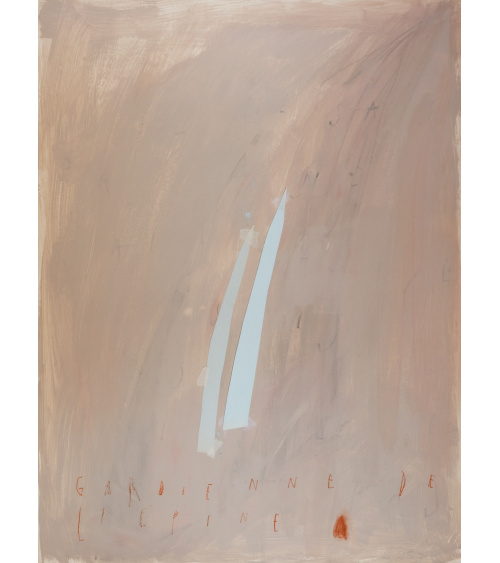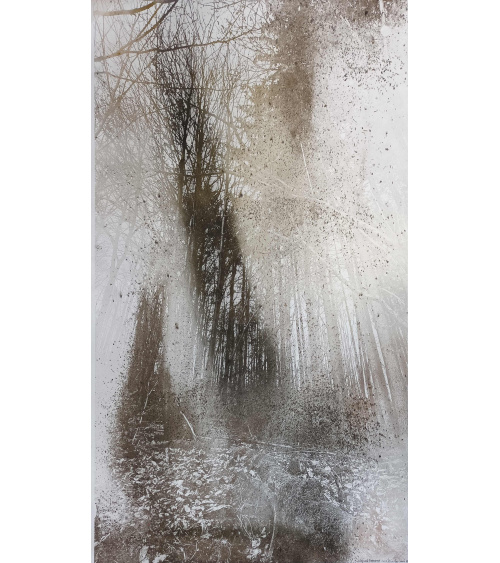Philippe Favier - Les Iles O
Marine maps from the early twentieth century are the backdrop for a triptych inhabited by signs and diverse highlights. Original intervention by the artist on each piece of the series.
Ever since the 80’s, Philippe Favier has been working on his particular universe that has no equivalent in contemporary art. Collages, paintings, photographs and etchings are among the domains he chooses to explore.
Starting off with ancient objects or documents he collects in fairs and flea markets, he unrolls a dreamlike world that re-establishes the codes of representation.
The edition he has just created for Bernard Chauveau Publishing and Le Néant Publishing is exemplary. Marine maps from the early twentieth century are the backdrop for a triptych inhabited by signs and diverse highlights.
In each part, the pattern is hidden, annihilated by black paint that allows several effects of texture to appear here and there. Even if the margins let certain signs appear, even if a few islands are still apparent, Philippe Favier disturbs the ensemble by adding elements that are both pictorial (a monumental “O” in white gouache marks the work) and that resemble miniscule objects (metallic flowers, golden chains and painted texts).
There are eight copies of this triptych, each one is unique, since Philippe Favier decided to intervene directly on each element of the series. The artist admits that The O Islands has marked a turning point in his studies of occidental typography, which for over six centuries has represented the way we represent the world.
Data sheet
- Size
- Size:
- First element: 52 x 70 cm
- Second element: 70 x 100 cm
- Third element: 52 x 70 cm - Edition
- 8 copies
- Justification
- Signed and numbered
- Technique
- Printed and serigraphed on Canson Rag Photographic paper 310g
- Publication date
- 2014
Favier (Philippe)
In Europe’s artistic scene, Philippe Favier is an example of a singular practice which has no real equivalent. Born in 1957, he has, since the 1980's, produced paintings where the motif becomes a simple ornamentation of a wider whole, without visible hierarchy and without any particular construction apart from the fact that it creates an off-camera, both physical and mental. There is in this artist, the idea that art should, above all, activate imagination. To achieve this he does not hesitate to introduce fascinating little figures, sometimes multiplied to infinity. Using the theme of vanities, death and skeletons, he fills his pages with ordinary but surprising objects that alternate with intriguing otherworld images. The important point for him, is that the book, the images, the story-path, are to be read and deciphered. The work is a synthesis between the pages full of crypto glyphs, and the page after-page succession of possible readings. Philippe Favier builds impossible works, without beginning, without end, without orientation, without any destination other than to lead us into unsuspected depths in our imagination. Time stretches, lengthens to infinity, takes different forms according to how we read.
No customer reviews for the moment.
